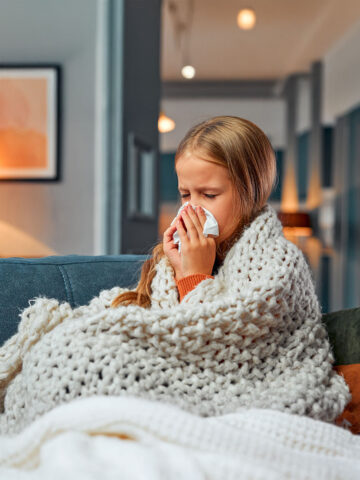In this Q & A, Dr. Rebecca Barros, a pediatrician in the CHOC Primary Care Network, explains the causes, symptoms, treatment and prevention of ringworm in children.
What is ringworm?
Ringworm is a type of fungal skin infection typically found on the scalp, some parts of the body, and finger or toe nails. When it’s found on the scalp, its medical name is tinea capitis. When it’s on the body, it’s called tinea corporis. On the nails, it’s called onychomycosis.
Other fungal infections that might sound familiar and have specific locations on the body are jock itch – which occurs when fungus grows on the groin, upper thighs or buttocks – and athlete’s foot, which occurs when fungus grows on the feet.
What causes ringworm? Is ringworm contagious?
Dermatophytes – fungi that normally live on the skin, hair and nails – cause ringworm. When the environment dermatophytes live in gets warm and moist, they grow out of control and cause symptoms.
From there, ringworm can spread from a person, as well as from pets or other animals such as cats, dogs or rodents. The fungus can also be passed on objects like combs, brushes, hats, towels or clothing.
Warm, moist environments like public showers, locker rooms and pool areas give ringworm an environment to thrive in. And because ringworm spreads through close physical contact, it’s common for people who play close-contact sports such as wrestling to develop ringworm.
Additionally, a few conditions can increase a person’s likelihood of getting ringworm: minor skin injuries; too much exposure to heat and humidity; and some health conditions such as diabetes, obesity or immune system problems.
What are signs and symptoms of ringworm?
Here’s what parents can look for ringworm in babies, children and teens:
Ringworm on the face, hands, neck or other skin starts as a red, scaly patch or bump. Over time, it may appear like one or more rings with raised, bumpy and scaly borders, often with a clear center. This ring pattern gives the rash its name, though it’s not visible in every infection. The skin may flake, peel or crack, and it can itch, sting, burn or feel uncomfortable.
Scalp ringworm may start as a small sore that looks like a pimple. From there, it becomes patchy, flaky or scaly and might look like dandruff. It can make some hair fall out or break into stubble, leaving a bald spot. It also can make the scalp swollen, tender and red.
Sometimes, it causes a larger mass called a kerion, which can become superinfected and cause swollen lymph nodes at the back of the head or neck.
Ringworm on the nails may affect one or more nails on the hands or feet. The nails may become thick, white or yellowish, and brittle.
How is ringworm diagnosed and treated?
Doctors can often diagnose ringworm in kids after a visual exam and asking questions about symptoms and the child’s lifestyle. In some instances, the doctor might scrape off a small sample of the skin for further examination under a microscope or for a lab test.
For mild ringworm infections, which usually clear up in two to four weeks, the doctor may recommend an over-the-counter antifungal cream, spray or powder. More serious infections may need prescription medicine, either to spread on the skin or to be taken by mouth, and may take up to three months to heal.
An oral medication taken for one to three months generally treats ringworm on the nails or scalp. A doctor may also prescribe an antifungal shampoo to help prevent spreading the rash to others.
Ringworm on the nails or scalp usually is treated with medicine taken by mouth for 1 to 3 months. An antifungal shampoo prescribed by the doctor can help prevent the spread to other people.
Here are a couple other things to note:
- It’s important that the child uses the medicine as long as recommended, even if the rash seems to improve. If not, the infection can resurface and spread to other parts of the body.
- It’s also important to keep the affected area clean and dry to help speed healing.
- Children should wash and dry the area with a clean towel, being careful to use a separate towel for other parts of the body not affected.
Can ringworm be prevented?
Parents, children and teens can take a few steps to avoid ringworm:
- Keep skin clean and dry. Wash daily and dry completely, particularly after showering, swimming or sweating.
- Use clean towels and avoid sharing clothes, towels, combs, brushes and hats.
- Wash sports gear and uniforms as often as possible and don’t share them.
- Avoid wearing tight clothing.
- Change clothing daily.
- Wash hands well with soap and water after playing with pets.
- Treat any other fungal infections, such as athlete’s foot or jock itch.
For more health and wellness resources from the pediatric experts at CHOC, sign up for the Kids Health newsletter.
Find a CHOC Primary Care Pediatrician
From babies to teens, pediatricians from CHOC’s Primary Care Network partner with parents to offer immunizations, sick visits, sports physicals and more.





